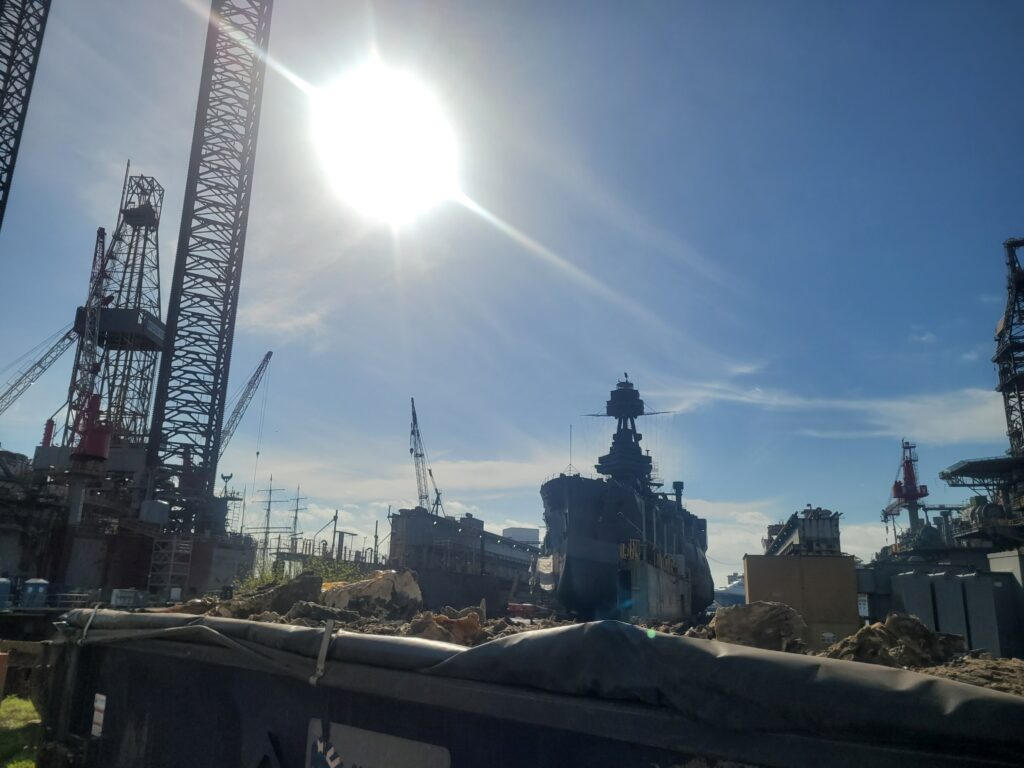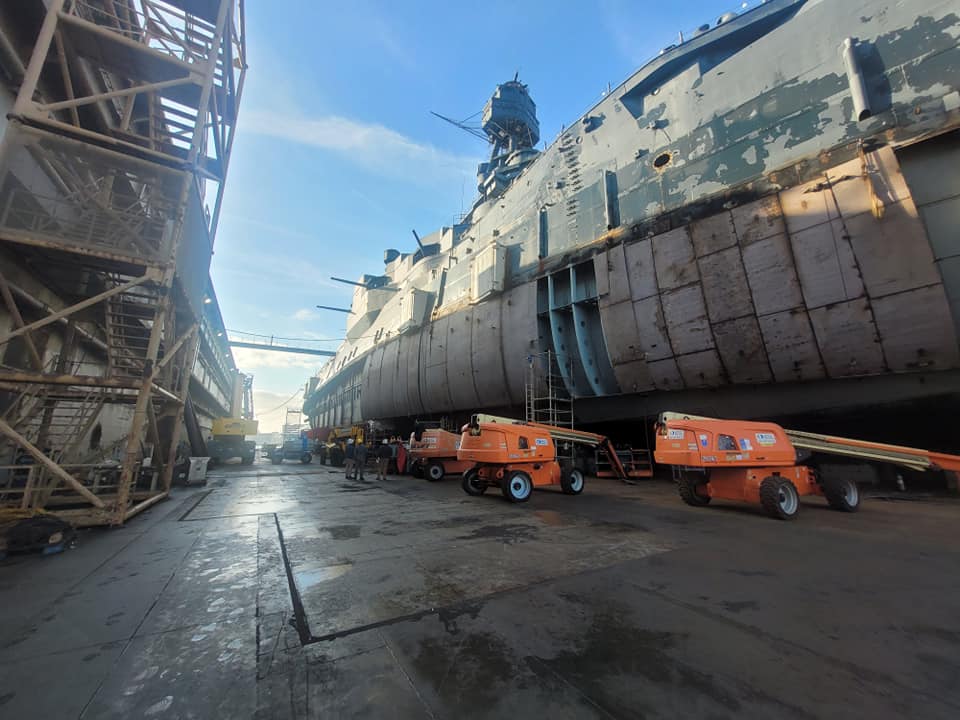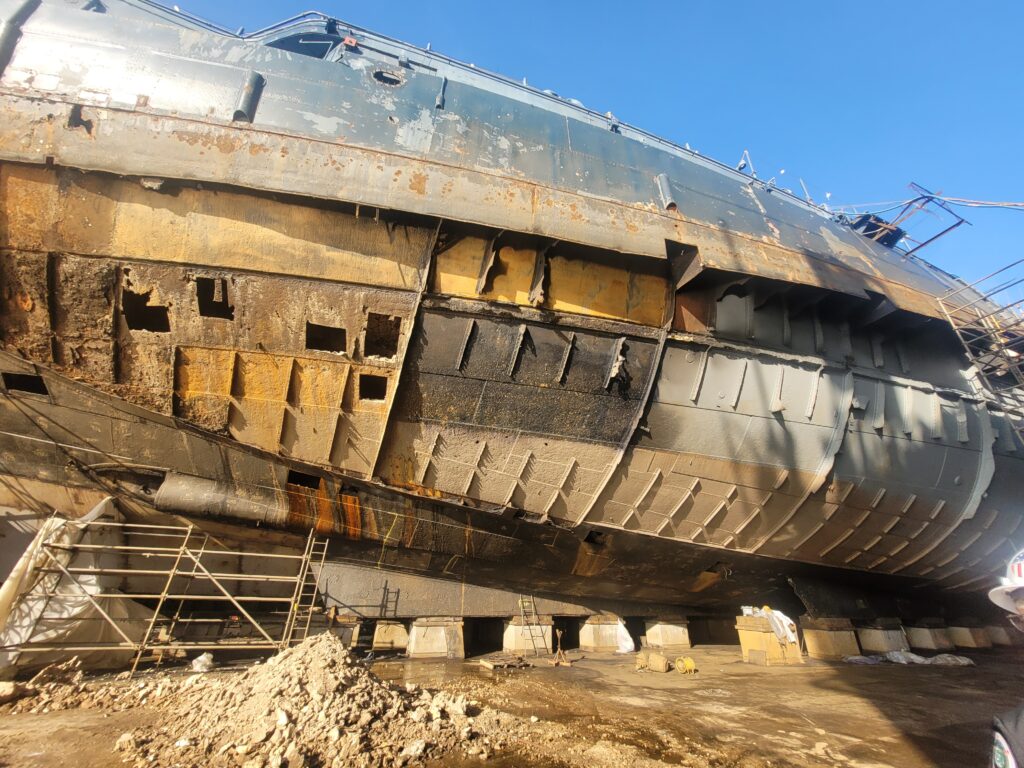
Last week was an experience, to say the least. I left my house at five thirty in the morning, and I thought that would give me enough time to make it to the shipyard in Galveston by around seven thirty, but boy, was I wrong. Everything was on time until I was about five minutes away from the ferry, then Wanda happened. And it happened at five miles below the speed limit. I didn’t pass on her because I’ve had great luck with the ferry lately, but this will never happen again. We finally boarded the ferry at around 7:38 a.m., but my tour was at eight, so I was still simmering from the delay—at least we were moving. While on the ferry, I noticed that my weekly Sunday morning post hadn’t appeared on Facebook. Everything was business as usual on WordPress, but Facebook does its own thing. After arriving home, I discovered that the post was scheduled for seven in the evening instead of in the morning. I had scheduled it the night before, and I always have issues with Facebook, so this is the last time I’ll schedule a post on Facebook when I’m sober, but I digress.

I made it to the shipyard by around 8:05 a.m., although it was off to the races on Broadway Avenue and Pelican Island Causeway to make it there. To be honest, that black Ford F-150 in front of me was going at least 70 mph. Not sure what he was late for, but it was most likely dropping someone off at the cruise ship.
The tour was excellent, and the docent nicely explained the historical background of the last dreadnought. Also, it’s always a good thing when you have someone who knows the work being done and points out the process of how it’s actually done. These tours are held every Sunday from eight in the morning to three in the afternoon. You must sign up for them through the Texas Batteship Foundation’s website, but please don’t do what I did and think that there is only one tour at eight in the morning, because if you do, you may find that Wanda is lurking out there to make you late.

Okay, now let us delve into the history of Old Hoodoo, and my propaganda about why it should come to Beaumont.
The USS Texas is a New York-class battleship that was approved by Congress in 1910, laid down in 1911, launched in 1912, and commissioned in 1914. It was the first ship to have ten 14-inch guns. While it was the most potent weapon in the world at the time, as they say, today’s powerful weapon is tomorrow’s outdated pea shooter. The USS Texas served in World War I and World War II, during which it escorted war convoys across the Atlantic. It shelled the enemy in Normandy on D-day and provided naval gunfire support during the battles of Iwo Jima and Okinawa. Serving in two world wars, the ship suffered only one casualty in the line of duty—Christen Christensen, the helmsman on duty on June 25, 1944, in Cherbourg, France. The Texas was firing on German positions in the port when an enemy 24-cm shell skidded over the top of the conning tower and exploded. Eleven seamen were injured in the blast, but Christensen succumbed to his wounds.
The USS Texas was decommissioned in 1948 and was the first permanent battleship memorial museum in the United States. The museum operated under the direction of the Battleship Texas Commission, which the Texas Legislature established to care for the ship’s safe upkeep. In 1983, the ship was turned over to the Texas Parks and Wildlife Department due to mismanagement and neglect by the leadership of the Battleship Texas Commission. The Texas was moved to a dry dock for repairs in 1988.
This brings us to the past few years. Over time, the Texas has taken in water. This has been bad—about 1,500 gallons per minute bad. However, two years ago, the foundation that now runs the Texas agreed to put foam in the hull to reduce the leakage. The water intake went from 1,500 to 50 gallons per minute. This is good news for a stationary ship, but if you’ve seen the video of the vessel being moved, you’ll know that there were a lot of nervous people on that day. The Texas could have sunk. Fortunately, the ship made it to dry dock, where it is today.
As far as I know, they are only considering three places to relocate the USS Texas: Beaumont, Baytown, and Galveston. All three have good and bad points. Ultimately, though, the most important thing is what is best for the ship. First and foremost, it will be out of dry dock no later than June 1, 2023. After that, we will not know where the Battleship Texas Foundation plans to dock the vessel until the chosen city can begin construction on its part of the agreement. I am certain that they have a plan, but I find it odd that they hadn’t already made a decision.
So, what are the pros and cons of each proposed site? Certainly, Galveston is the most popular tourist attraction, but it is hard to get to. If the ship was moored along Interstate 10, it would be much easier to reach. That is a plus for Baytown and Beaumont. Another problem is keeping the vessel in salt water. Recently, I was told that this would not be a problem if the maintenance was kept up, but if history repeats itself, I am concerned. Based on my little knowledge of Galveston politics, I do know that they would want a piece of the pie, so to speak. I assume that the money raised by the Battleship Texas Foundation is for the upkeep and maintenance of the ship, and it should stay that way. I do not know if Baytown or Beaumont will be seeking a cut of the profits other than what the tourists would bring in. Finally, I am biased and will state that, in Beaumont, the water, although not pure, is not salty. There is a lot of potential to make this a great place to visit.
In the end, it probably will come down to politics. Still, I hope the powers that be will consider making sure that a Texas treasure is preserved. The ship is the last of its kind, and it needs to be protected.
Until next week
The Texas Battleship Foundation

You must be logged in to post a comment.